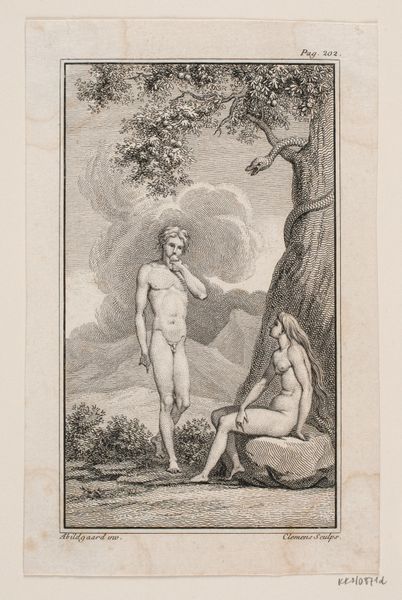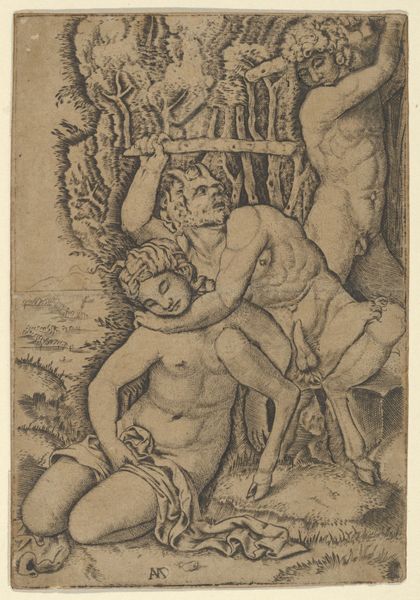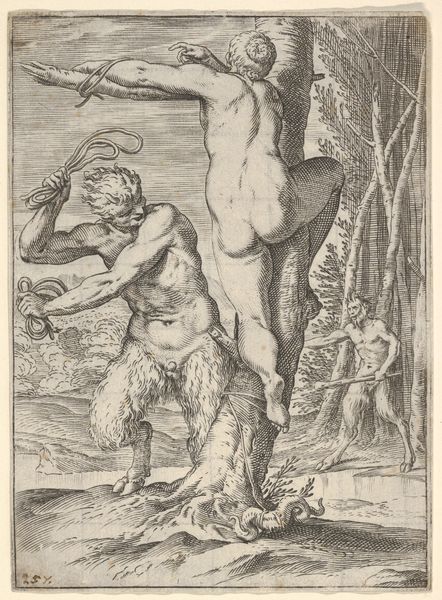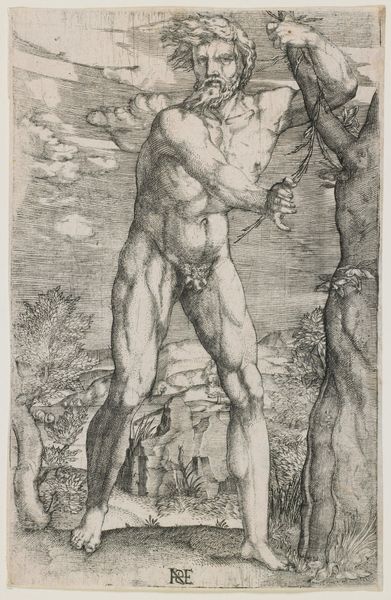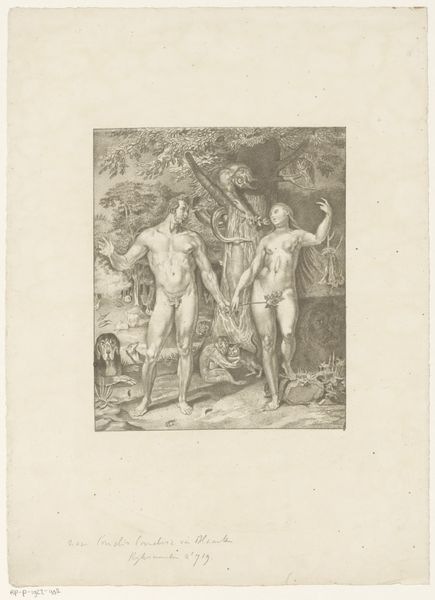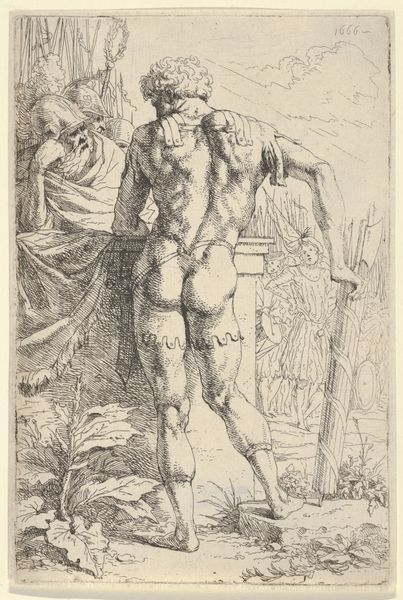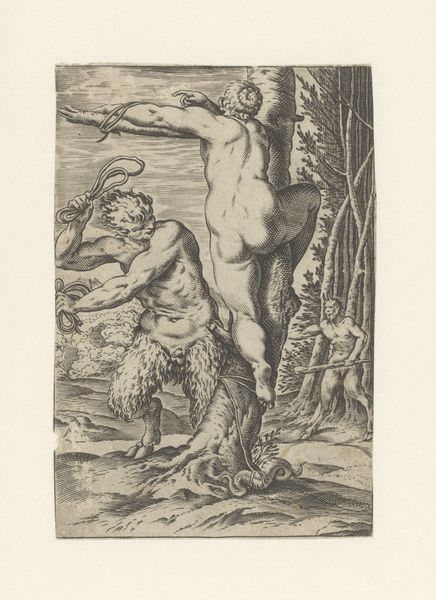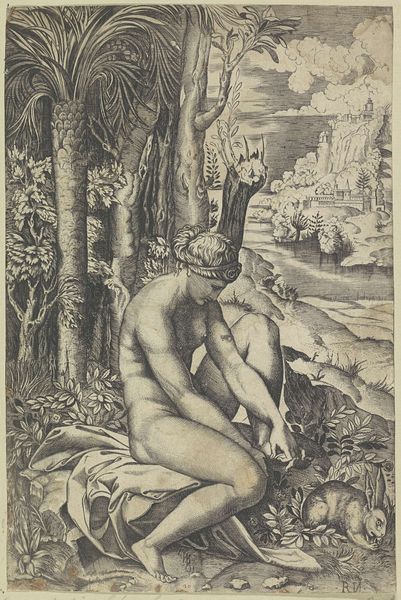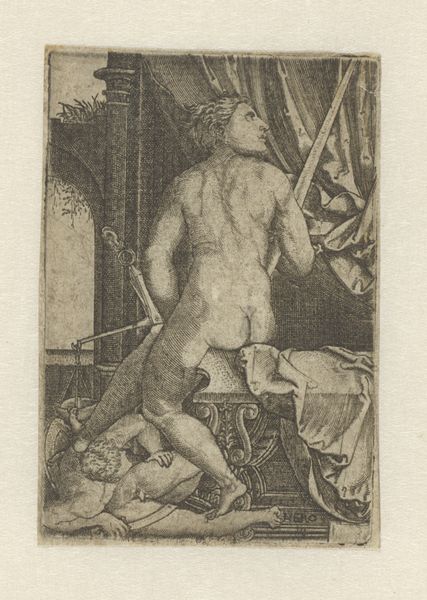
drawing, print, etching, charcoal
#
drawing
# print
#
etching
#
landscape
#
charcoal drawing
#
figuration
#
romanticism
#
charcoal
#
charcoal
#
nude
Dimensions: 67 × 46 mm (plate); 83 × 62 mm (sheet)
Copyright: Public Domain
Curator: Here we have "The Fatal Bellman," an etching done by George Richmond in 1827, currently held at the Art Institute of Chicago. It's quite small, but what do you make of it? Editor: Striking. It’s undeniably haunting. The figure stands nude amidst this somber landscape, giving off an intense, almost disturbing aura. Curator: Indeed. Richmond was deeply influenced by William Blake. We should look at how the print adopts Romanticism's interest in the sublime and the dark undercurrents of the human psyche. Notice the owl, positioned above the central figure. The title gives a vital clue—the owl “shriek'd the fatal bellman”. This comes from Act II, Scene 2, of Shakespeare’s Macbeth when Lady Macbeth drugs the grooms. The owl's cry signals a moment of impending doom. Editor: Ah, connecting the dots with Macbeth adds a layer of sociopolitical commentary. The bellman, historically associated with public announcements, now embodies this tragedy. It’s worth discussing how Richmond employs a vulnerable male nude to embody the fatalistic narrative—how gender, identity, and power intersect within the artwork's theme. Curator: Exactly. Considering the social and political turmoil of 19th-century Britain, anxieties surrounding social upheaval are evident in the pervasive sense of dread within the landscape. The stark contrast between light and shadow amplifies that emotional tension, almost inviting the viewer to confront difficult questions about the future. The use of Romantic symbolism suggests a broader exploration of human limits against the power of fate. Editor: I agree. Exploring how "The Fatal Bellman" participates in shaping discourses around power, morality, and resistance offers contemporary audiences avenues for critical reflection and intervention. This challenges us to question the artwork's enduring role in contemporary culture. Curator: Thinking about its original audience is crucial, of course. The politics of imagery shaped Richmond’s choices here. And in turn, works like this shaped how society processed anxieties. Editor: Absolutely. Its power resonates still, I think, as we reflect on our own vulnerabilities, anxieties, and collective destinies. Curator: Agreed. “The Fatal Bellman” is more than just a beautiful object; it’s a mirror reflecting complex layers of individual and social experience, and an echo of larger movements.
Comments
No comments
Be the first to comment and join the conversation on the ultimate creative platform.


